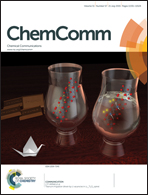Design of tumor-homing and pH-responsive polypeptide–doxorubicin nanoparticles with enhanced anticancer efficacy and reduced side effects†
Abstract
Tumor-homing and pH-responsive polypeptide–drug nanoparticles for targeted cancer therapy are precisely designed by site-specific drug conjugation to a bioactive and well-defined elastin-like polypeptide through an acid-labile linker. In a murine cancer model, these nanoparticles show significantly better anti-tumor efficacy and less systemic toxicity than not only free drugs, but also polypeptide–drug nanoparticles without the tumor-homing function.


 Please wait while we load your content...
Please wait while we load your content...